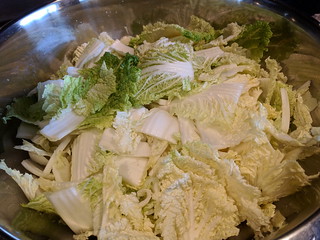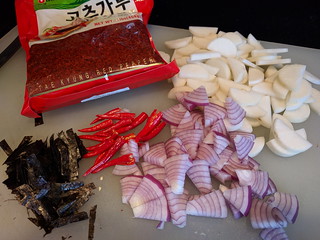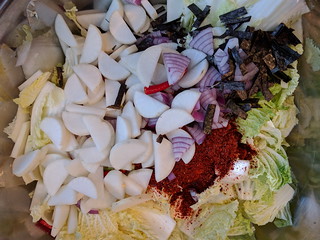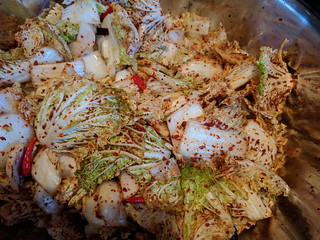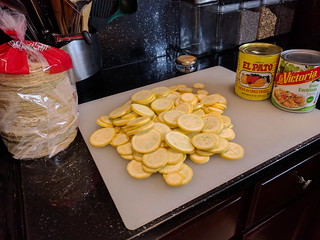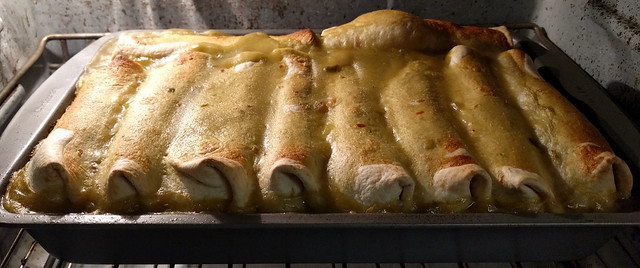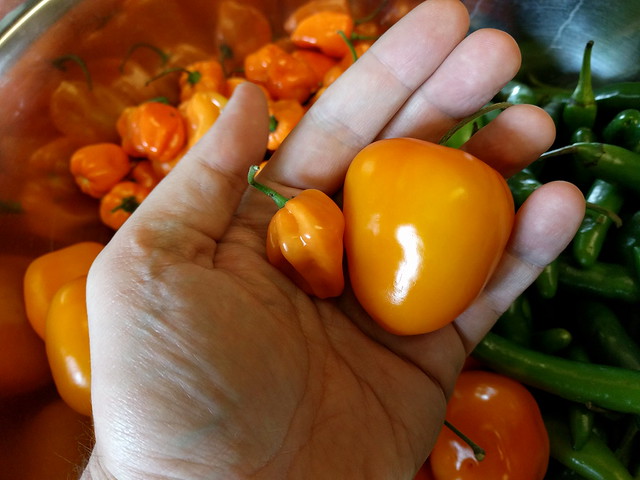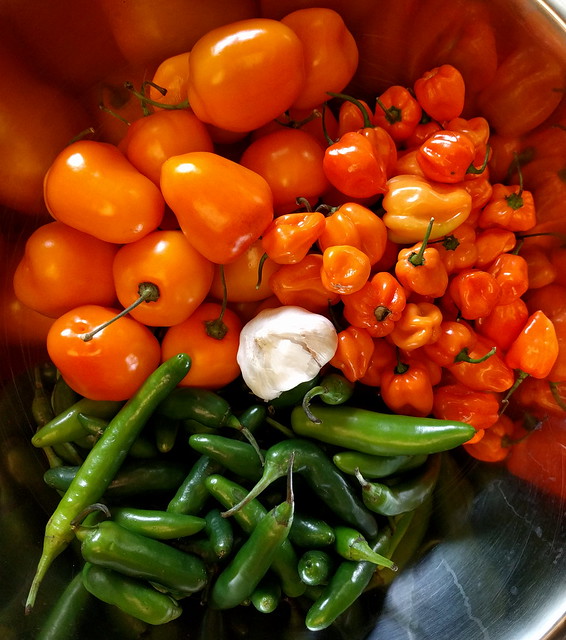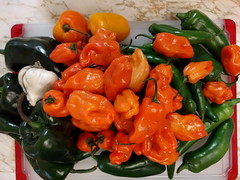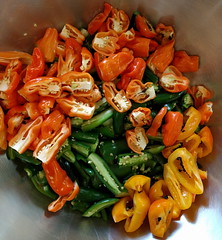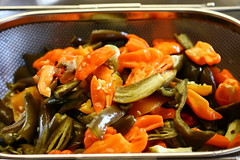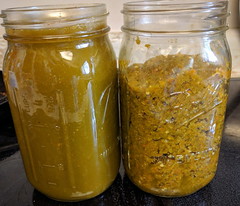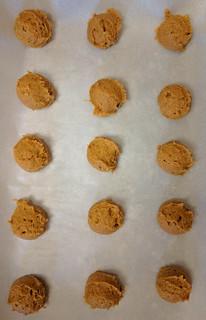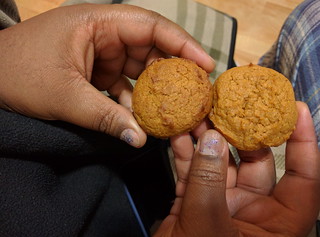Another week! Another pile of collapsed boxes! As of today, all we have left to unpack are the art supplies and to hang what mirrors and paintings are going to go up. Everything else is unpacked and has a permanent home and/or is sorted into donation boxes, awaiting pickup on Wednesday. Less clutter = more peace, and that’s really helpful to T getting creative work done. This is a very quiet neighborhood (except when someone gets the odd urge to mow something, or the train blows its whistle), even on the weekends, and the wind whistling through the house works as natural white noise. It makes for good napping conditions – and we are still exhausted enough to take advantage of them. Well, we think about it, anyway…
On D’s work front, his first week at the new job was immensely enjoyable – so much so that he neglected to come home until after seven, occasionally. There’s much to be done, and much chaos to organize, and he’s enjoying the challenge (or the chaos, one or the other. Not clear which just yet).
To those who’ve complained we’ve gone radio silent and feel as far away as we did when we lived in Scotland: apologies! You’ve asked what the house looks like. Here’s part of downstairs. A glimpse of upstairs to come next time.
Above is what we’ll call “the den,” simply because the living room / dining room is the next space over. As you can see, we’re still sorting a few things, organizing the kitchen space, using a folding table. That table will get tucked away until holidays or some other need, soon.
If you’re in the den, you’re looking into the kitchen. Yes, those are sticky notes on the cupboards – we had to decide what went where, and haven’t quite gotten it down to memory yet. Things are still shifting around (the flour moved all the way across the kitchen, just last night, to find a home in a cabinet next to the sink, rather than next to the fridge). We’re still trying to get the cupboard space to work well, which is odd, since they’re so narrow and some of them are so deep. As large as the ones next to the fridge are, they’re still too narrow for our largest mixing bowls, so those have had to relocate to the closet next to the garage door.

We have done our first proper baking here, though, 10 days after moving in (the quiche last weekend doesn’t count, really). A gas oven is miles off from an electric, and there’s an adjustment of all the senses, especially sound (that whoomp as the pilot lights), and smell (that little whiff of gas). Touch is the one sense that doesn’t fare quite as well here… because the oven thermostat is so far off, we had to order an external thermometer. It takes about 45 minutes to get up to close to full heat (set it at 390°F and it’ll get to 350°F in that time), and then gradually slides even hotter, so you have to adjust the temperature down when you put your baking in. We notified the invisible property management people, who report that the owner insists that this is what an oven is supposed to do, and we’re just going to live with it until it falls over.
We are not amused.
At least the bread turned out superbly.
Onward into the new week, with its goals of placing the last mirrors, rugs, and artwork, figuring out the irrigation system and finding a home for the last odds & ends. Until next time,
-D & T

